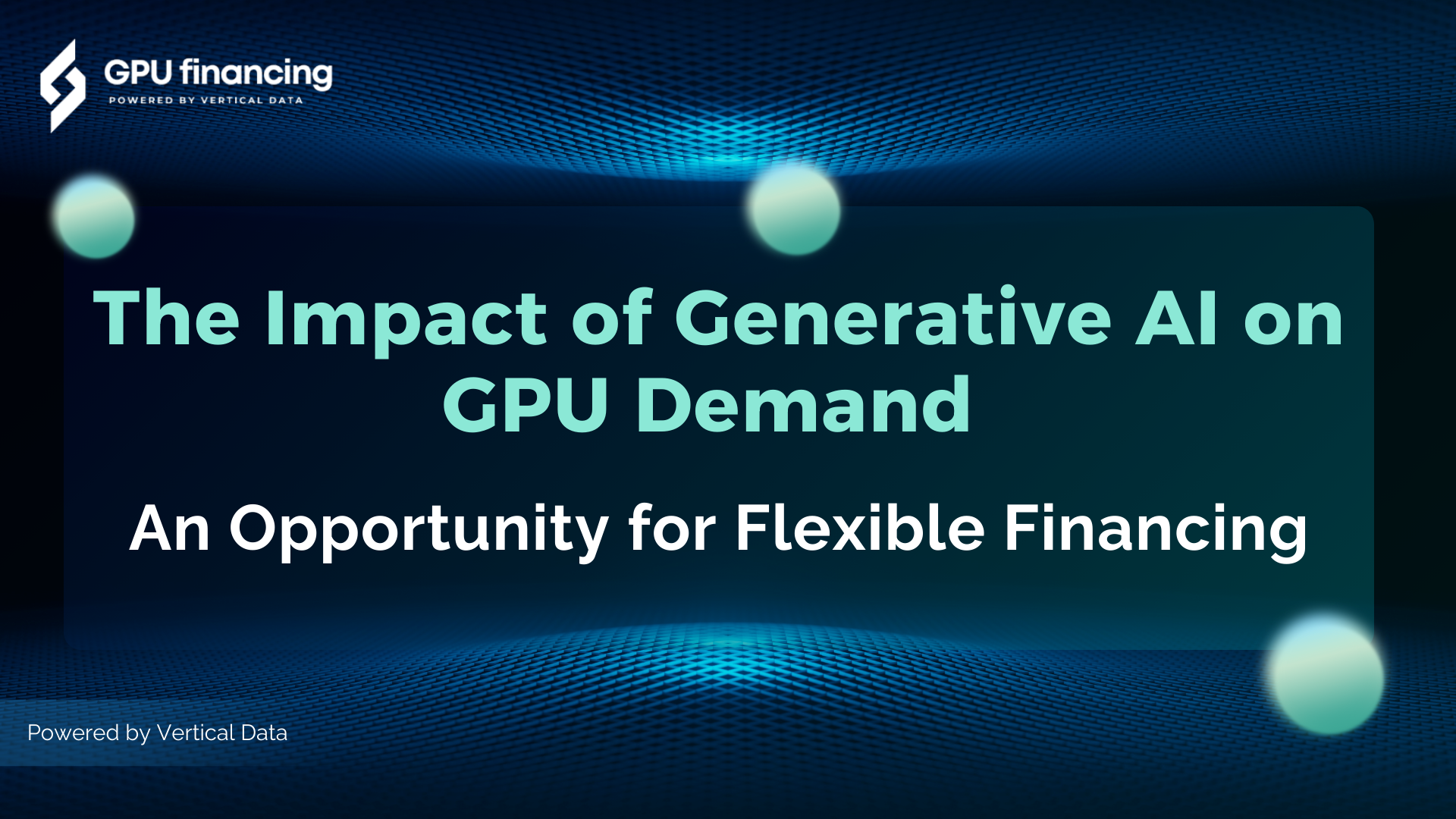Introduction
The rapid ascent of generative AI has reshaped numerous industries, from content creation to scientific research. This transformative technology, capable of producing new data, images, text, and more, relies heavily on one critical component: Graphics Processing Units (GPUs). The insatiable demand for computational power to train and run these sophisticated AI models has created an unprecedented surge in the GPU market. For businesses and innovators looking to harness the power of generative AI, this escalating demand also highlights a crucial need for flexible financing solutions.
Generative AI and the GPU Imperative
Generative AI models, such as large language models (LLMs) and diffusion models, are characterized by their massive parameter counts and complex architectures. Training these models involves processing colossal datasets, a task that benefits immensely from the parallel processing capabilities of GPUs.
Unlike traditional CPUs, GPUs are designed to handle thousands of concurrent operations, making them ideally suited for the matrix multiplications and tensor operations that underpin deep learning. This inherent architectural advantage has positioned GPUs as the indispensable backbone of generative AI advancement.
The demand for high-performance GPUs has skyrocketed, leading to significant market growth. The global data center GPU market, for instance, was estimated at USD 16.94 billion in 2024 and is projected to reach USD 192.68 billion by 2034 . This exponential growth is a direct consequence of the widespread adoption and continuous development of generative AI applications across various sectors. Companies are scaling their data centers from tens of thousands to over 100,000 accelerators to meet the computational requirements of these AI workloads . NVIDIA, a leading GPU manufacturer, holds a dominant 92% market share in the data center GPU segment, further underscoring the critical role of specialized hardware in this ecosystem .
The Challenge of High Capital Expenditure
While the benefits of leveraging generative AI are clear, the associated costs of acquiring the necessary GPU infrastructure can be substantial. High-performance GPUs and the servers required to house them represent a significant capital expenditure (CapEx) for businesses, especially for startups and small to medium-sized enterprises (SMEs).
This upfront investment can be a barrier to entry, limiting access to cutting-edge AI capabilities and hindering innovation. The rapid pace of technological advancement in the AI space also means that hardware can quickly become obsolete, adding another layer of financial risk for companies making large, one-time purchases.
Flexible Financing: An Opportunity for Growth
This is where flexible financing solutions become not just an option, but a strategic imperative. For businesses seeking to capitalize on the generative AI boom without crippling their balance sheets, tailored financing models offer a viable path forward. These solutions can include:
•Leasing Programs: Instead of outright purchasing, businesses can lease GPUs and related infrastructure. This converts a large CapEx into manageable operational expenditures (OpEx), freeing up capital for other critical investments. Leasing also provides flexibility to upgrade hardware as newer, more powerful GPUs become available, mitigating the risk of technological obsolescence.
•Pay-as-you-go Models: Some financing options are emerging that align payment structures with actual usage or project milestones. This can be particularly beneficial for AI development, where computational needs might fluctuate based on training cycles or project phases.
•Asset-Backed Financing: For larger deployments, asset-backed financing allows companies to secure loans using the GPU hardware itself as collateral. This can provide favorable terms and longer repayment periods, typically ranging from 36 to 60 months.
Understanding the financial implications of acquiring high-performance GPUs, gpufinancing.com aims to facilitate access to the necessary computational power. We offer flexible financing solutions designed to help businesses manage the costs associated with scaling AI infrastructure, enabling them to focus on innovation and accelerate their development and deployment of AI solutions.
Conclusion
The symbiotic relationship between generative AI and GPUs is undeniable. As generative AI continues its explosive growth, the demand for high-performance GPUs will only intensify. This creates a significant opportunity for flexible financing solutions to bridge the gap between the immense computational needs of AI and the financial realities of businesses.
By embracing innovative financing models, companies can unlock the full potential of generative AI, accelerate their development cycles, and maintain a competitive edge in an increasingly AI-driven world.


